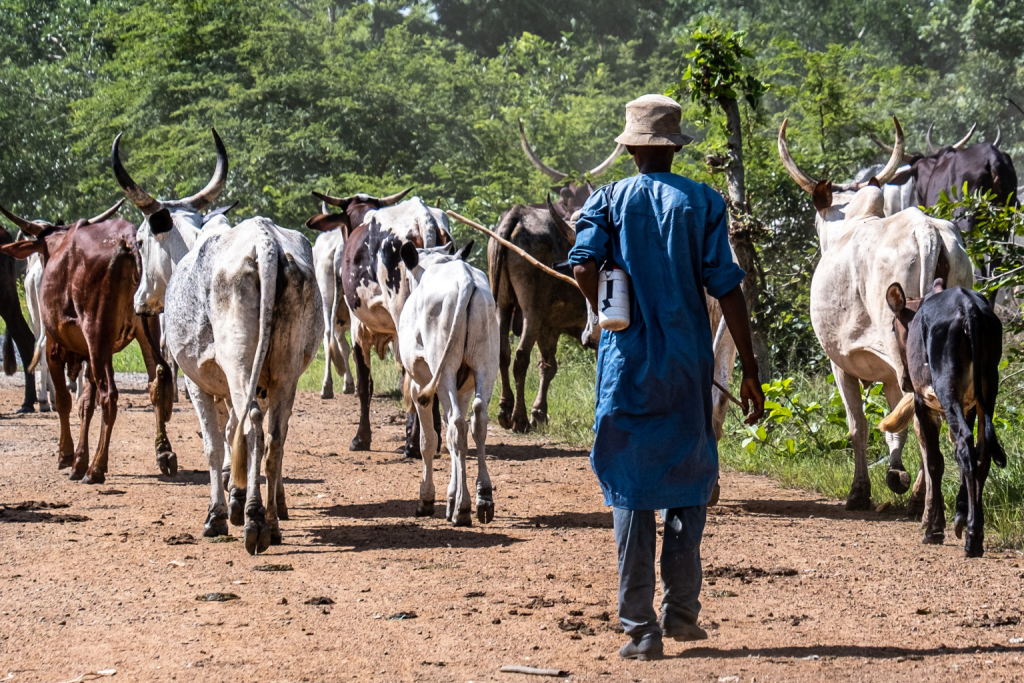The Fulani people, one of Africa’s largest pastoral populations, have long fascinated researchers, historians, and anthropologists. With a population exceeding 40 million, they are spread across the vast Sahel/Savannah belt, stretching from the Atlantic Ocean to Lake Chad. Despite their widespread presence, their ancestral origins have remained a mystery—until now.
Recent genetic research has shed light on their deep-rooted history, revealing a fascinating blend of North and West African ancestry shaped by centuries of migration and interaction.

One of the main reasons why the origins of the Fulani have been difficult to trace is their nomadic way of life. Moving seasonally with their herds, many Fulani groups set up temporary camps or mobile tents, leaving little archaeological evidence behind. Unlike settled civilizations that built monuments or left behind written records, the Fulani have passed down their history primarily through oral tradition. But science is now filling in the gaps.

A recent study, published in the American Journal of Human Genetics, is helping to piece together the Fulani’s genetic puzzle. Conducted across seven African countries, researchers collaborated with local Fulani communities to collect biological samples and anthropological data from over 460 individuals.
What they found was remarkable: a genetic lineage that not only connects the Fulani to various African groups but also hints at ancient links to North Africa.
“We discovered genetic differences between local Fulani populations, following a west-to-east gradient. These findings highlight a complex history shaped by interactions with different local groups and major demographic events,” explains Mame Yoro Diallo, a PhD researcher from Charles University in Prague.
A Legacy of Ancient Migrations
One of the most striking findings of the study is a genetic component that is shared across all Fulani populations. This component traces back to the Green Sahara period—12,000 to 5,000 years ago—when what is now the vast Sahara Desert was a lush, fertile region teeming with life.
It is believed that early African pastoralists thrived during this time, potentially giving rise to the ancestors of today’s Fulani.
“Comparing Fulani genetic data with ancient DNA samples revealed connections with ancient North African groups, particularly with Moroccan populations such as the Berbers,” notes Carina Schlebusch, an evolutionary geneticist at Uppsala University and senior author of the study.
In addition to their ancient roots, the Fulani’s genetic diversity reflects more recent historical events. Over the last 500 years, the trans-Saharan trade routes facilitated extensive interactions between different African communities.

This trade network likely played a significant role in spreading pastoralist practices across the Sahel and introducing new genetic influences from western, central, and eastern sub-Saharan Africa.
“Even though the Fulani are one of the most significant population groups in Africa, they have been largely underrepresented in genomic research. This study not only enhances our understanding of their history but also contributes to the broader study of human diversity in Africa,” says Cesar Fortes-Lima, a population geneticist at Johns Hopkins University and Uppsala University.

The Story Continues…
The Fulani’s genetic history is still being unraveled, with new discoveries continuing to refine our understanding of their origins and migration patterns. What is clear, however, is that their identity is shaped by centuries of movement, adaptation, and cultural exchange. As research progresses, we may yet uncover more secrets hidden within the DNA of these remarkable nomadic pastoralists, painting an even richer picture of Africa’s human history.
For now, their story serves as a reminder that even in a world dominated by technology and rapid change, the echoes of our ancestors live on within us, waiting to be rediscovered.
- SOURCE: American Journal of Human Genetics
- Related Article: Planet Jupiter’s Mysterious Origins Solved? A Breakthrough Model
- For Firsthand Information, Join the Sciencenaija channel on WhatsApp



